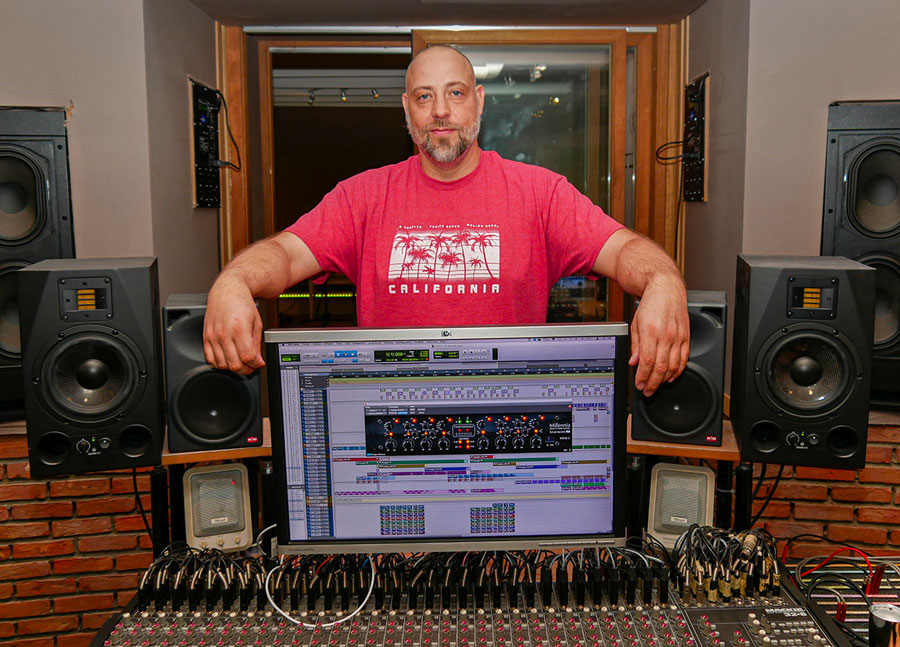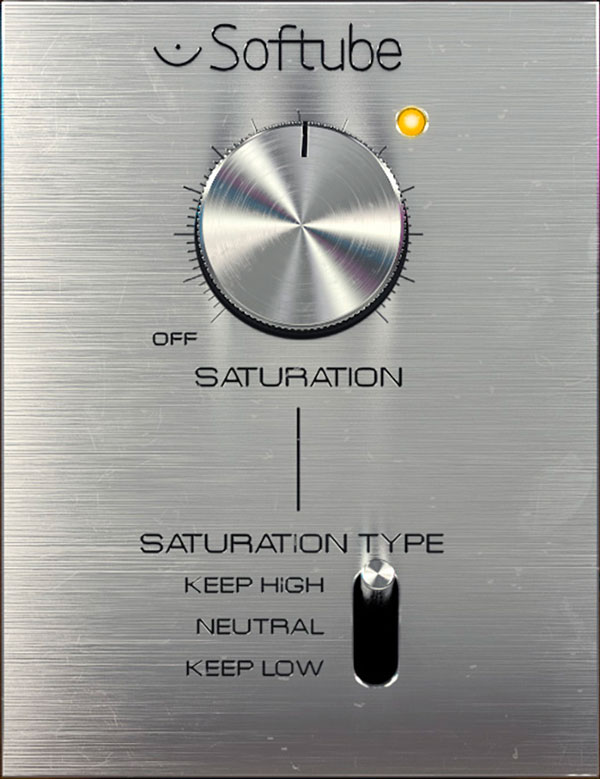Since the very first EP “Alors On Danse”, Lionel Capouillez has been mixing the sound of Stromae. We meet him in Brussels, in his Air Studio for a two-part feature.
With “From the Studio to the Stage”, we’ll discover how and with which tools an album is born. In “From the Stage to the Studio”, instead, we’ll explore how the work done in the studio is adapted to the stage.
With this first article, we also welcome Christophe Masson, a man of uncommon experience and competence, to our editorial team. With his pen and his insights, he’ll highlight the connections between the creative process and the world of live performance, and let even more technicians have their say. Even the Belgians. Non peut être !
Built in the ’90s by the Italian band Wamblee after the enormous success in Belgium of their track “Anitouni”, this studio was run by Lionel for eight years. He was the resident sound engineer, before leaving and then buying it back a few years later to devote it entirely to his own mixing activities.
SLU : When you took over the studio, what were the first changes you made?
Lionel Capouillez : When I took over the studio, I had to upgrade the mixing booth. I immediately had some acoustic improvements made because I had problems between 150 and 200 Hz. FAR Audio handled the job.
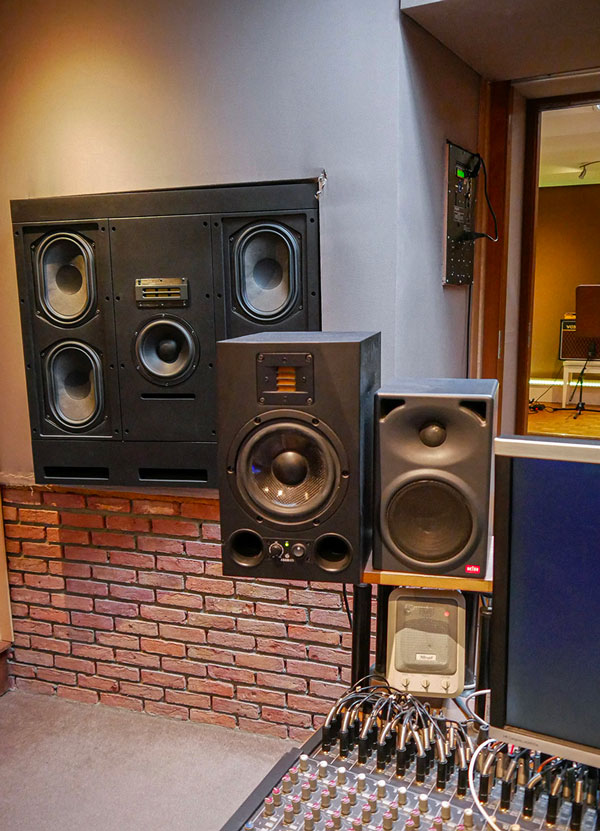
Being also a speaker manufacturer, they advised me to replace the large monitors, which were from an older generation, with a custom-made system. The result blew me away. At the time we were touring with the Meyer Leo system, and when I listened to these new big monitors I thought, “Wow, this feels like live music… same feeling, same sensation, I’m really happy with these.”
Of course, I supplemented the existing equipment with all my hardware outboards that have always accompanied me in freelance work and live shows. The studio area has remained unchanged and perfectly suits to my needs for very sporadic recording, with a brighter zone for vocals, and a more subdued zone with a basstrap ceiling for amplified guitars or percussion.
SLU : So, a studio not just for Stromae?
Lionel Capouillez : I collaborate with Stromae both in the studio and on tour. When he’s active, of course, I dedicate a lot of my time to him, but I also work for many other artists. They mainly ask me to mix tracks for radio stations and modern media.
SLU : You’ve got some well-stocked racks…
Lionel Capouillez : Yeah, I do. I use the hardware outboard processors for specific needs that only these can handle, like the Bricasti M7 and TC Electronic M3000 reverbs, which I also bring to Stromae’s live shows. There are also a lot of preamps, of which my favourites are the Chandler Germ 500, the API 512, the Avalon 737, and a JoeMeek that I like for its distortion.
Then there’s the famous SSL compressor; I love the plug-in, which I use a lot, so I’ve duplicated it in the hardware version. I use it a lot on drum buses. There’s the dbx 160SL and the Drawmer gates, for their awesome efficiency. The Urei 1178 compressor is one of my favourite. It has a dirtiness that you don’t find in today’s outboards and plug-ins. With this compressor, I can get a lot of cohesion.
In fact, I don’t like it too clean. In many of today’s productions, everything is in its place but it lacks edge.
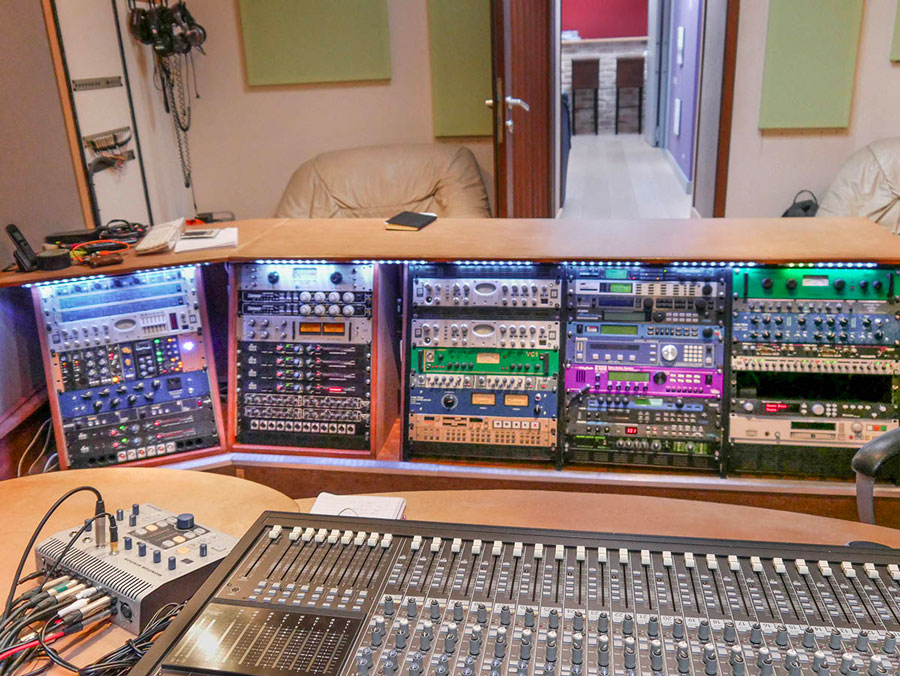
Other favourites are the Summit Audio TLA100 for soft, French vocals that still need to liven up a bit after processing, and the Distressor for vocals that don’t need to move at all. I really like the unique character of the Alesis Quadraverb and Miniverb multi-effects, which I often use on snare drums. Of course, there’s the Eventide H3000S. And don’t forget the Tegeler Audio stereo compressor that I sometimes use on masters.
A lot of this gear also follows me on live shows. I test a lot of gear on tour. “There’s not much risk in trying out products live. That’s the best place for me.” When the hardware proves itself, I then bring it back to the studio.
SLU : Surprisingly, there is a Mackie 32-8 console?
Lionel Capouillez : Yes, right now there’s nothing going through it! (he laughs) I mix everything in the computer. I may use it from time to time as an insert for drum buses, on which I need to insert an external corrector or compressor.
SLU : Now let’s get down to brass tacks. What is your mixing setup?
Lionel Capouillez : I do everything in Pro Tools with RME FireFace 800 audio interfaces. We used these interfaces on Stromae’s “Racine Carrée” live show – replacing the less-than-€100 interfaces we had on the first tour, yes it’s true – and we were blown away by the conversion quality.
The drummer was busy on his bass drum when I changed the interface. We just said: “Woww, but the snap! That was so much better, scary.” We kept them. I have two more ADAT RME ADI-8 DS MKIII converters, to go up to 24 in/out.
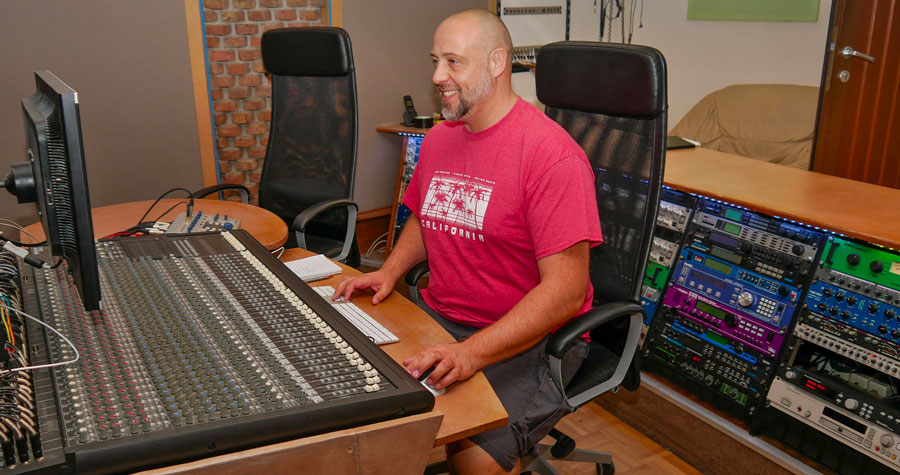
SLU : If I understand correctly, you do all your mixes in native?
Lionel Capouillez : Yes, that’s right. Everything is done natively. For the mix, the latency doesn’t bother me at all. And anyway, latencies below 10 ms… honestly, if you’re bothered by that, you’re a robot, aren’t you?
On the other hand, if I’m mixing and I’ve got a lot of plug-ins in use that increase latency and I want to redo a vocal, I bounce the instruments to do the takes and then put them back into my mixing session. It’s as simple as that.
Plus I’m very mobile. When I’m on tour, I might be asked to make a change to a mix I’ve done during the week, like a simple vocal or snare adjustment. In native, I can reopen my session on my laptop and easily regenerate a new version.
SLU : But I don’t see any control surface for your Pro Tools in the studio…
Lionel Capouillez : I don’t need one. When I started using Pro Tools, which was years ago now, I did all my automations on screen and therefore with the mouse. I haven’t changed. I find it much more convenient and much more accurate.
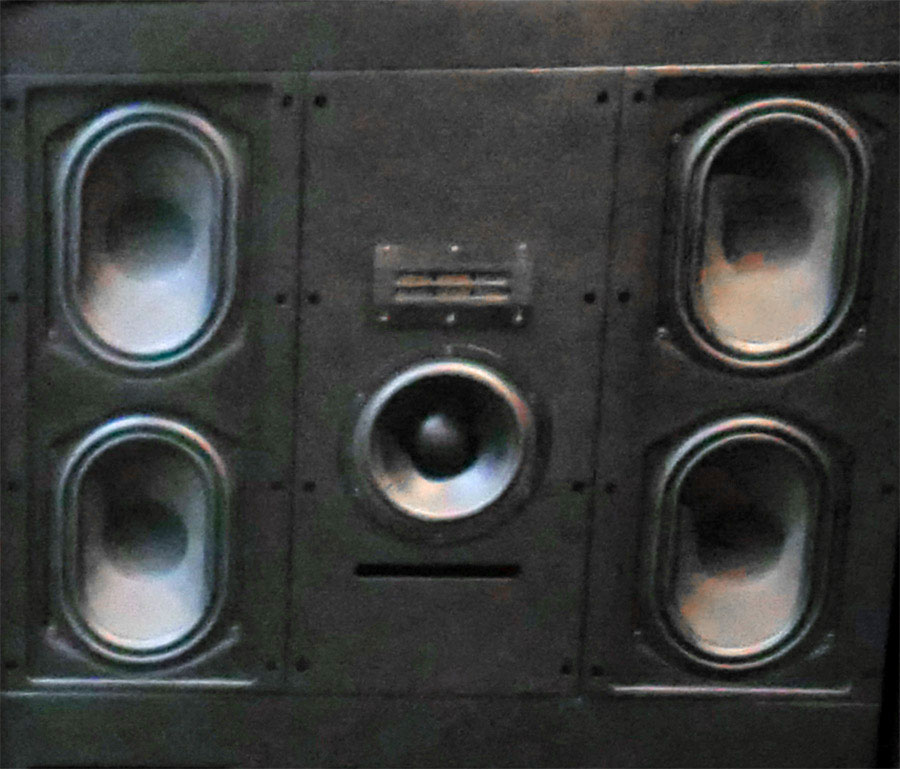
SLU : And, in terms of listening?
Lionel Capouillez : The large FAR Audio monitor was custom built for the studio and tuned to my tastes. The ribbon tweeters suit me well, because I like sweet and precise highs.
For the near-field, there are ADAM Audio A7Xs and KHs, which are unforgiving if there is a problem between 500 and 1000 Hz.
I mainly mix on the big monitors, 70% of the time. I love working on them. They’re warm, they’re pleasant, they don’t hurt your ears. The bass is fabulous.
I start with the rhythm section and all the work on the lower end of the spectrum. And then the voices. They give me the frequency extension and detail I need for this work. You have to really listen to realise that.
Sometimes when you work only with near-field listening, you tend to get a little carried away and do too much. Then when you go back to the open listening, it sounds like a wet firecracker. In this case, you have to rework the bottom end. So I often alternate between the ADAMs and the big monitors. Then, towards the end, I fine tune on the KHs.
In any case, I think that settling for near-field listening to mix, even with an additional subwoofer, seems very, very restrictive, because below 50-60 Hz, everything is dragging, everything is filled in without being well defined. It lacks impact and precision. To make real mixes, you need some big monitors.
SLU : And for mastering?
Lionel Capouillez : I don’t handle the mastering. On the other hand, I make, in addition to my final mix, a “boost” version which allows the artist to have a comparable version with the sound volume standards used in streaming and radio. At the mastering stage, I send the “no boost” version as well as a minus singer and an a cappella voice version that allows them to deal with a particular problem with the voice, if necessary. I do this systematically for all my mixes.
SLU : Do you have a role in the artistic production of Stromae’s music?
Lionel Capouillez : Basically, Stromae produces all the music for his songs. He does everything in Reason. It’s his software, which he has mastered perfectly. For the album “Racine Carrée”, Reason was not yet open to external sound libraries. So the tracks were made only with native sounds in Reason. It was very practical, because I could find everything in the studio without worrying about having to install plug-ins.
Now Stromae still uses Reason but with additional VSTs like Native Instruments, Serum, Keyscape, Omnisphere, Latin Urban, Repro… When he has a track finished and ready for mixing, he sends me the Reason session and I export the tracks with and without processing.
At that point, I’m free to suggest things, reverb or effect automations, particular edits. I send him back the mixes, he listens to them and makes comments, so we exchange information from a distance. At the end of the process for all the tracks on the album, we book a couple of weeks in the studio together, during which we finalise all the mixes.
SLU : What about Stromae’s voice?
Lionel Capouillez : In the studio, I use a Neumann U87 on an Avalon 737. It works, it does what it should do. Why look elsewhere? The studio classics have been around for a long time and we still use them – there’s a reason for that.

We can invent all the new equipment we want, but the dbx 160 works, the Avalon works. In the studio I love the 737 because it does everything, it’s warm, the sound is beautiful. It works, and I use it all the time. It suits me very well.
SLU : And I suppose you do the voices in your studio?
Lionel Capouillez : No. Stromae records all the vocals at home. It’s very rare that we re-record a voice here. He has a very good studio at home, which allows him to produce his songs. He has an RME Fireface 802 interface, a Neumann U87 microphone and an Avalon 737 preamp. As a general rule, I avoid re-doing vocals as this can cause problems with the consistency of the sound.
SLU : And the instruments?
Lionel Capouillez : There are few instruments in Stromae’s compositions. There are just guitars, charangos, and there’s also a bass, but only in live performances. Those are also recorded in his personal studio.
SLU : By the way, how did you get started with Stromae?
Lionel Capouillez : Stromae’s sister used to go to the same gym in Brussels as I did. We hit it off, and when she found out I was a sound engineer, she asked me for my card to give to her brother who made music.
He called me back a month later. He had some projects to mix. For someone who was producing on his own at home, the tracks were very well done, the ideas were good and the compositions were unique. He really knew what he wanted, which was rare in the studio at the time.
Just for the record, on the first day of work with him, I forgot that he was coming. He called me and said he was at the studio door… and I said “aahh… I’m stuck in traffic, I’ll be there as soon as I can”. Fortunately I was only thirty kilometres from the studio and I arrived forty minutes late.
SLU : Tell me about your technical choices on the albums.
Lionel Capouillez : For all of Stromae’s albums, everything is mixed completely internally in Pro Tools, in the box. We didn’t use any outboard equipment, only plug-ins.
SLU : But the sound of Stromae’s albums is particularly warm and powerful!
Lionel Capouillez : The warmth often comes from the bottom. Thanks to my great listening setup, I can really work on the bottom and that’s what brings the warmth, and gives it a little “analogue” feel. Yes, with digital you can make mixes like that. I use hardware mostly for live performances (editor’s note: we’ll see that in a future article). I mix live in analogue with a Midas H3000.
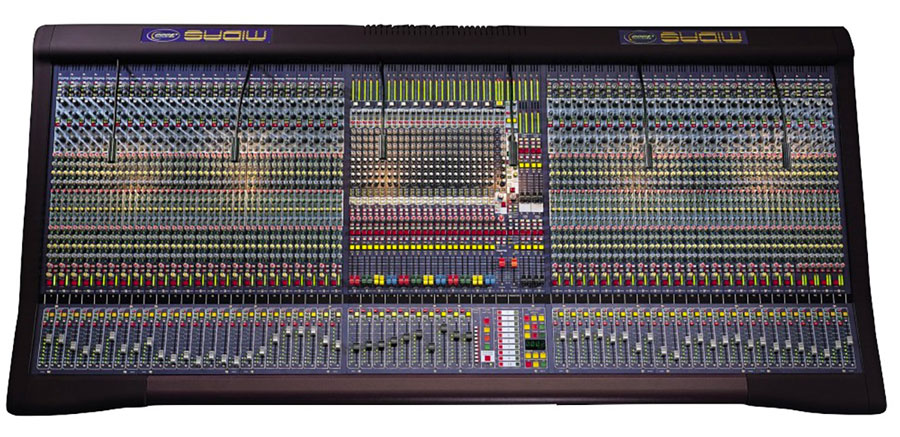
So I work without snapshots. I use it as a huge analogue summing amplifier and correcting device. I was able to choose an analogue console because all the sources, except for a few guitars, are digital. We spent three weeks in the studio, balancing the tracks and all the sources together. When I set all the faders of the tracks on the console to unity, I normally have a perfect mix because everything is prepared beforehand. That’s the only way I can reproduce the finesse of Stromae’s compositions and production.
SLU : The soundscape – you work a lot on the spatialisation, the foreground and background around Stromae’s voice.
Lionel Capouillez : Yes, I really like to do reverb effects. For example, on “Fils de joie” when he shouts “C’est un héros” there’s this particular kind of effect. That was my initiative and I think it adds a nice dimension. I like to bring these effects to the surface. In other songs like “L’enfer”, the breaks are all done by Stromae and I add reverb effects to bring it to life.
I work with four buses. The Voice, Bass, Drums and then the rest of the instruments. I also really like to open up the stereo on the instrument bus, not on the vocals, not on the drums or the bass. It gives the vocals their space. One thing I don’t like, though, is to have an instrument only on one side. It drives me crazy. If I want to create that kind of effect, I don’t pan it more than 45 degrees, or I add a short delay on the other side. While I use hardware reverbs from TC and Bricasti live, in the studio on Stromae’s albums I use plug-ins: Lexicon, D-Verb.
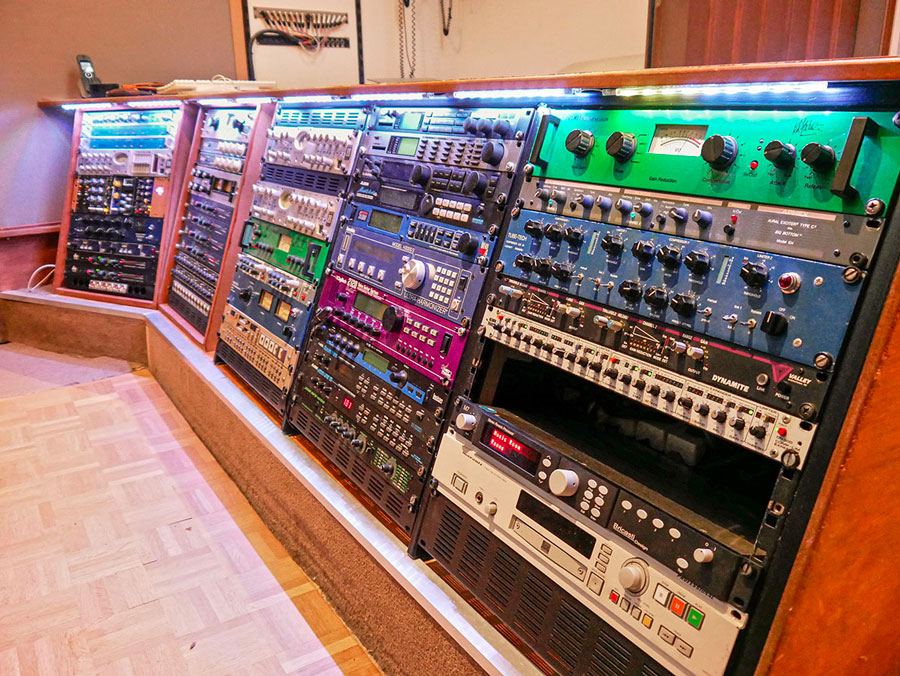
SLU : The song “L’enfer” is a good example of your mixing work for Stromae… with those spatial differences, the presence of the voice, the richness of the sound.
Lionel Capouillez : Yes, it’s a very rich track. The piano sound is amazing. It’s a simple plug-in from Reason. At first I wanted to cut the bottom end because you can hear the pedals and a whole bunch of noises…and in the end I didn’t. I left it raw and it really feels like you’re in the room. It’s a nice introduction to the song. There are also string arrangements played by the Belgian National Orchestra, which we recorded in another studio and were also on six other tracks. The strings were edited, we make them sound faded.
And then there’s the crazy percussion that Stromae did, which sounds like it’s breaking up the mix. There’s a great spatial contrast, because the backing vocals are extremely reverberant. And I spread this sound so wide that I had to make a second identical track in mono, which I mixed to compensate for the middle. This provides a very spacious effect while remaining consistent.
SLU : The balance of Stromae’s voice is particularly well done in this rich musical universe. The voice never seems to be compromised!
Lionel Capouillez : I try not to let that happen. I don’t do much automation of the levels. For example, if I have a synth that masks the voice a little bit, I’ll cut down on the troublesome frequencies. And I also like to use a little sidechain multi-band that triggers with his voice to compress certain frequencies, sparingly and only on the bus of rest of the instruments, the bus I’ve pushed out in the stereo. Anyway, Stromae’s music is marvellously well thought out, and of course this makes the mixing much easier.
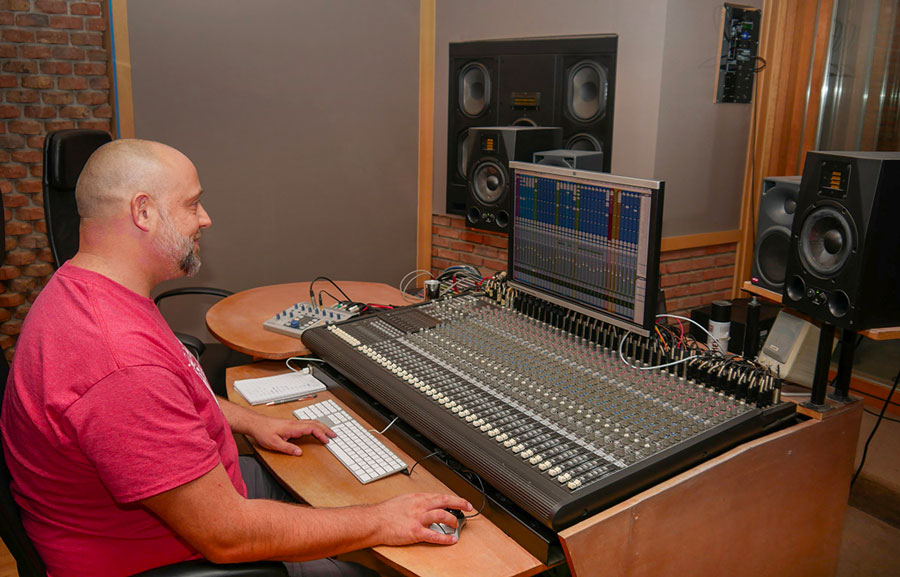
SLU : The unique sound of Stromae…
Lionel Capouillez : Stromae is the one who makes a lot of changes. For example, on “Racine Carrée”, there was a spectacular sound. I thought to myself, where did that synth sound come from? I took out all of the Reason effects and discovered that it was basically a church organ.
He’d added a distortion, which went back into another distortion, which went into a reverb, which went back into another distortion, and then a stereo expander, which also added a chorus. This is what artists should do more often. Nowadays I notice that we mostly use the basic presets and we layer them.
Often a musician will say to me, “for this sound that I wanted to be punchy, I added a synth that had a low end, and because I was missing a high end, I then layered another synth with a high end, but…”. Often I’ll tell him: in your synth, you can take the basic preset and fiddle with the corrections, change the waveforms and make your own sound. People have become a bit lazy (he laughs). Stromae does a lot of tinkering. And it’s even more fun to mix, because it’s always easier to take things out when you have a lot of them…
SLU : Is groove important to Stromae?
Lionel Capouillez : Yes, very important. On the last album, there is a lot of percussion. There are also some strange grooves, like on the first single “Santé”. Stromae played the bass drum and the snare drum without synching it to a click, but rather as he felt it. When I listened to it, I had the instinct to adjust everything. I did it on the bass drum, which I thought was essential.
Then I tried it on the snare drum and it didn’t work; it was losing something. So we left the groove as it was, and just played with the EQs and the result is very distinctive. We were criticised for this particular groove, that drifts a bit, but it adds something great to the song, which is what Stromae wanted. In fact, the drummer had to work a lot on this song live to reproduce the same feel on stage.
SLU : In his music, there are many breaks, suspended rhythmic elements…
Lionel Capouillez : Stromae composes very much by feel. And I find myself faced with a large number of rhythmic elements that are sometimes surprising. If I find that it’s a handicap in the mix, I’ll talk to him about it and maybe I’ll change it. But if he tells me no, and that’s the way it has to be, that it’s deliberate, then I leave it as it is, it’s his project. The artist is always right.
SLU : And what about the drums, do you have a particular method for mixing them?
Lionel Capouillez : On every track, I always start by mixing the drums. In fact, I love it. I have a specific method. I systematically saturate the sound of the snare drums and the claps slightly. I use a little free plug-in from Softube called Saturator Knob. It adds a nice touch that I particularly like
I also like to work on the bass drum by not being afraid to go low. It all starts in a bus where I put the SSL compressor from Waves in, with an attack time as delayed as possible and a release time as short as possible. The compression needle wobbles just a little. It ties the whole drum kit together in a very nice way.
I also try to put a sidechain on the bass that is triggered from the kick drum. When the two play together, the compressor frees up the attack of the bass drum, it allows the bass to get to the bottom and it usually results in a danceable groove. With the classic C1 from Waves, it works very well. To finish, I give a little air by correcting the highs around 10 kHz with the Active EQ corrector from Softube.
SLU : What are some of your favourite tools?
Lionel Capouillez : A lot of my favourites are software. I only use hardware like my console on one track, and in that case I record it directly into Pro Tools. Among my favourite plug-ins is the Alliance Brainworx BX plug-in equalizer. I love it; in all my sessions it is my basic EQ.
The CLA2A and CLA76 compressors from Waves are my favourite compressors. The Decapitator from Sound Toys has got my favourite saturation and with its “Punish” button, it works like a charm. The same goes for the Active EQ corrector from Softube, which I use a lot, and finally the SPL Iron from Plug-in Alliance, which
But you have to be careful! Plug-ins are a dangerous temptation. Remember the adage “Leave well enough alone”. You put in a plug-in that’s good… and then you think: couldn’t I do better? You risk losing the thing that you originally thought was good. I usually stick to my favourites. I know them very well and I know right away which plug-ins I’m going to use when I listen to a track.
SLU : Your favourite workstation is Pro Tools?
Lionel Capouillez : Yes, for mixing I do everything in Pro Tools. It’s become the software I know inside and out. I feel like I was born with Pro Tools. For composition, I worked with Cubase, whose audio engine I like very much and which, in the field of so-called musical sequencers, seems to me to be the most efficient.
There is also Ableton Live now. I must admit that I know a few producers who do mixes on it and they’ve knocked me out. Ableton Live has its own effects and instruments that allow you to create original colours, in which case it’s good to compose with it and extract the tracks for a final mix in Pro Tools.
SLU : Do you have any uncompromising principles?
Lionel Capouillez : The bottom end of my mixes is my trademark. I’m not afraid to go into the sub, but I’m careful not to overdo it. The voice is very prominent without necessarily being too loud. I have an ironclad rule on all my sessions: you need the right amount of gain on all tracks.
If the waveform is too low, it bothers me. I don’t normalise but I readjust the gain on all my tracks to around -4 or -5 dB so that I don’t go for too low a gain to start seeing the needle move on the compressors. Really good levels for a nice immediate view.
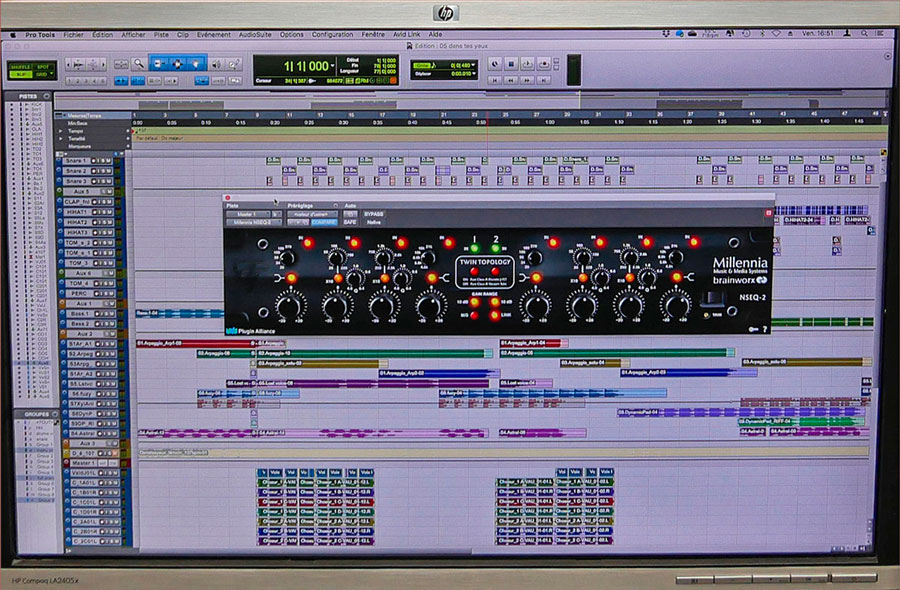
SLU : Do you edit Stromae’s vocals?
Lionel Capouillez : Yes, I do trim and clean. There’s also a bit of vocal correction. On an album it can happen that on two or three words, there is a passage that is more or less well controlled.
On the other hand, I systematically edit all the breaths. I compress the lead vocals hard, so I get all the dirt out and clean it up, and with each breath I do a little fade to make it smooth.
On the backing vocals that are singing along with the leads, I cut all the breaths. On the vocals, I often add quite long reverbs, which I automate. On “Fils de joie”, there is a very long reverb when he sings “C’est un héros”. When I first heard it, I thought, “Here, you need a big reverb that goes like this.” It sounded natural. It sounds good, I’m happy with it.
SLU : What about mastering?
Lionel Capouillez : I almost always work with Pieter from EQuus Mastering. We’ve gotten along well for years. I trust him 100%. He has respect for the music, and for what has been done in the mix. The sound level is controlled without making an unlistenable puddle of noise. I really like his work.
SLU : Are you missing anything?
Lionel Capouillez : I would love to add an API 2500 compression bus to my setup. An SSL Fusion which has a nice stereo expander… and upgrade my computer to a Mac Studio which sounds really extremely more powerful. I’m already pretty well equipped. Maybe a few more small compressors, including some original 1176s.

SLU : How do we sum up this first part about the studio?
I use the same studio technique for everyone else that I use for Stromae. My work with my four buses, my mastering process that I keep consistent throughout the album. In any case, the mastering is redone outside but sometimes the artists prefer my “boost” version.
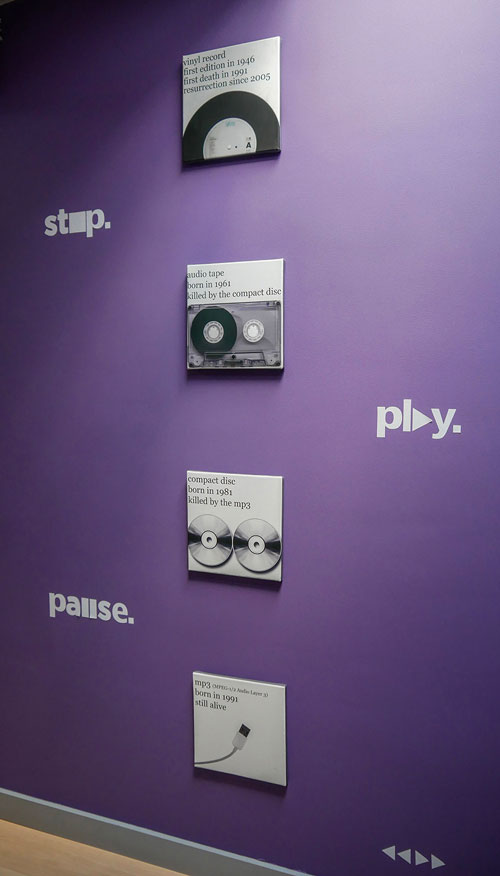
I work at 24 bit 44.1 kHz. I do not work at 96 kHz. Some will find it interesting, in my case I don’t find it revolutionary enough to overwhelm hard disks, sessions and processors, all for a gain in sound quality that is, for me, hardly audible.
In conclusion
With a meticulous technical approach mixed with a beautiful sonic creativity, Lionel Capouillez brilliantly manages Stromae’s sound universe. The award-winning studio albums are testament to this.
This sonic originality is also found on stage, which involves the implementation of equally original audio methods and techniques. I’ll be happy to tell you more about this in the second part of our interview: “From Stage to Studio”.
For more information (is that possible?) on Air Studio, click here



